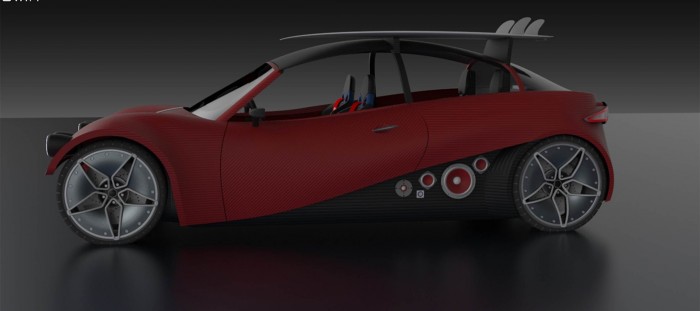
Local Motors, the startup company that previously brought you Strati — the world’s first 3D-printed car — has taken another significant step forward, this time on the way to printing the first highway cars.
The startup launced a 3D-printed car design competition, Project Redacted, in May when Local Motors asked its design community to come up with a suitable, highway-ready design for the next generation of 3D-printed cars. Strati, Local Motors’ original 3D vehicle, was not designed for road use or widespread manufacturing.
Local Motors announced Kevin Lo, an engineer living in Vancouver, Washington, as the winner for his design Reload Redacted — Swim and Sport. The design was built on a modular framework that allows the body panels to snap in and out of place, allowing for the vehicle to be redesigned and customised by the owner with ease. This modularity is also perfect for easily and more affordably repairing damage caused in an accident. Local Motors is going to use DDM (Direct Digital Manufacturing) in vehicle production, with the goal of decreasing the amount of tooling while increasing speed to market for legal 3D-printed vehicles.
“If you look at Strati,” says Lo, “it was meant to be a one-piece body — which is a beautiful idea — but the reality is if you take it to a highway level you have to include safety.”
In 3D-printing a laser is used to build various materials, from epoxy resins to powdered titanium, into solid objects, one pixel at a time. The process is relatively slow compared to conventional manufacturing but has the advantage of allowing nearly endless customisation.
Lo’s Reload Redacted — Swim and Sport is geared for a 2016 release.






